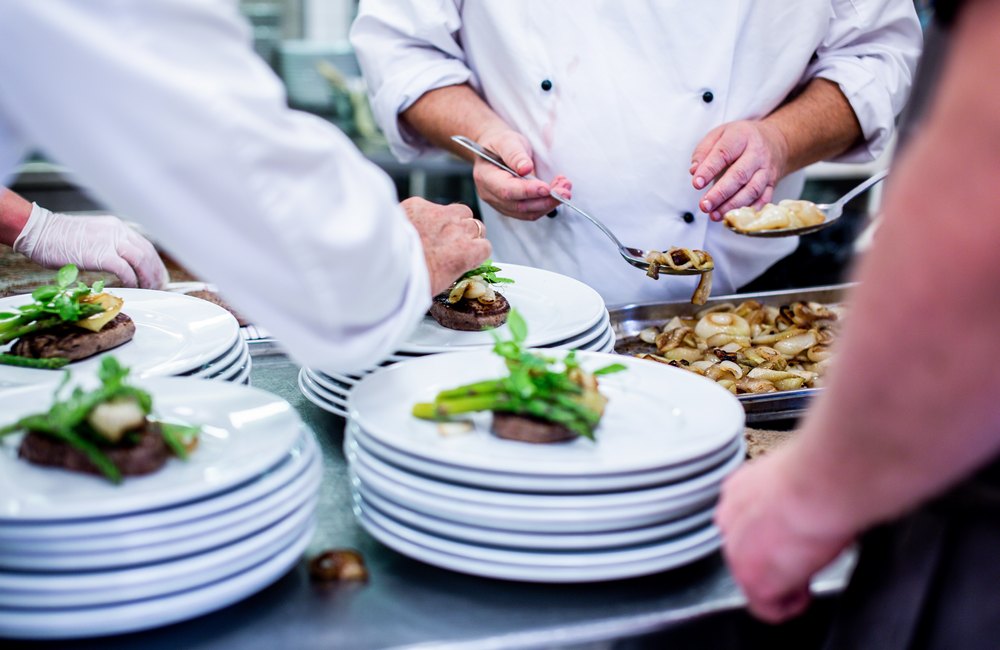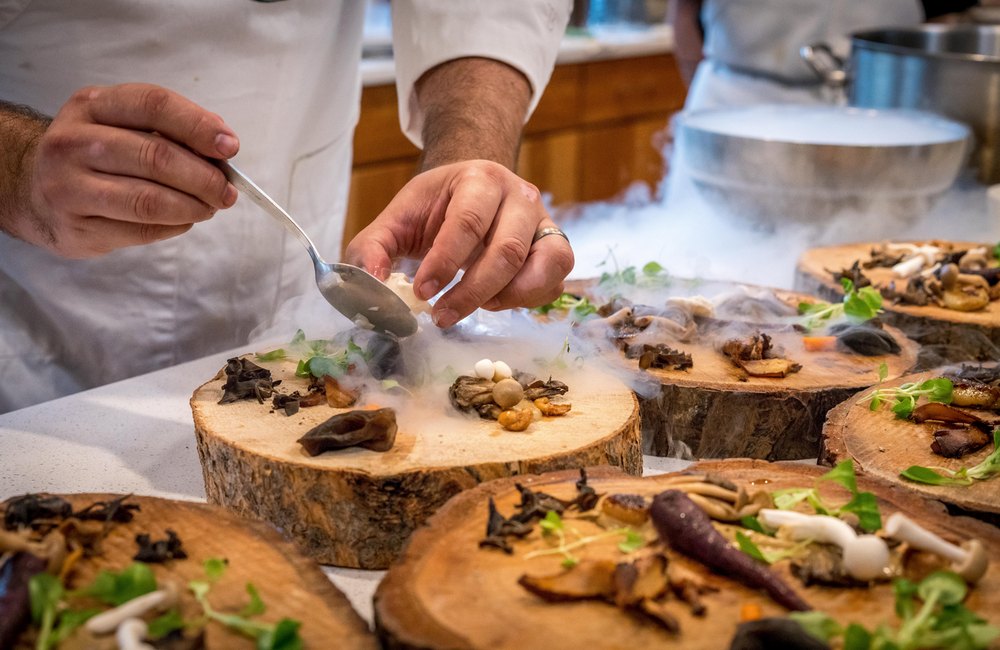Culinary terms are a major part of working in restaurants, and if you plan to work in the industry, there are many culinary phrases and terms you need to know. From basic waitress terms to terms chefs are likely to use, we're going to try and cover them all for you inside of this guide.

Culinary Terms A-Z: Your Complete List of Terms
- 86: An item that is "86'd" means that it's no longer in stock for the night.
- A la carte: A French term that means that the item on the menu isn't sold as part of a meal but separately.
- Al dente: A term that's often used when cooking pasta. This is one of the basic culinary terms in Italian. The term is meant to describe when the pasta is still firm when you bite it.
- Au jus: A simple term that indicates "with juice." This term is used when serving meat that has a thin layer of sauce or perhaps gravy on the side.
- Bain Marie: A hot water container, often used for slowly cooking items, such as cheesecakes.
- Baste: A term used when using a brush or pouring juices or other forms of melded fats on meat to keep them tender.
- Beat: A term used when you mix ingredients together thoroughly, such as stirring omelets, cake batter or other ingredients together rapidly. You can beat ingredients with a spoon, mixer or other tools.
- Bechamel: A type of sauce, often made with milk and a white roux.
- Bisque: A type of rich soup that is often made with lobster but can be made with any shellfish.
- Blanching: Culinary definitions and terms like "blanching" are often used for simply meaning submerging vegetables in boiling water for a very short time.
- Braising: A term is used when you cook food in a liquid for a long duration at low-to-medium temperatures.
- Brining: A common term when submerging any type of meat in a salt-filled liquid with spices. Brining takes one to two days and adds flavor to the meat without drying it out.
- Broil: Broiling is cooking meat or other items on high direct heat to caramelize or char it.
- Caramelize: The art of cooking a food's ingredient until it has a nutty flavor and brown color, much like caramel.
- Chiffonade: A technique that skilled chefs use to slice leafy greens and herbs by stacking, rolling and slicing the leaves thinly.
- Chop: The cutting of any ingredient, including fruits and veggies, into pieces.
- Confit: A term for when meat is cooked slowly in fat.
- ConsommГ©: One of the restaurant kitchen terms used in France is when a clear soup is made using either bouillon or stock and then clarified in egg whites.
- Coulis: The pureeing of vegetables or fruit to use in a sauce.
- Cream: The act of beating ingredients, often sugar and fat, into a light, fluffy and smooth substance.
- Cube: The cutting of food into squares of about an inch in size.
- Deglaze: The act of removing browned pieces of food, often from meat, using a liquid to make a sauce or gravy.
- Dice: When you chop ingredients into smaller sizes of 1/4" or as small as 1/8".
- Dredging: Coating wet or moist foods with a dry ingredient prior to cooking so that it forms a crust, as with fried chicken.

- Emincer: A cutting technique that is very similar to julienne, albeit with smaller pieces.
- Espagnole: Another mother sauce that chefs make with beef stock and vegetables.
- Filet: Fish or meat with the bone removed.
- Flambe: When alcohol is added to a pan, creating a flame until the alcohol is fully cooked off.
- Fold: The act of slowly combining lighter ingredients into a mixture using a folding technique. Often, you'll find this technique when eggs or whipped cream are added to a mixture.
- Jacquard: When holes are poked into meat muscle to promote tenderness.
- Julienne: Another chopping technique in which food is cut into short, thin slices.
- Knead: The pressing, folding or stretching of dough.
- Marinate: The soaking of food, often meat, in a seasoned liquid or wine, to add flavor when cooked.
- Mince: Cutting food into a size that is less than dicing.
- Mise en place: A term used when all of the prep work is complete before service begins.
- Mother Sauces: In total, five base sauces are used to create most sauces and will be part of what is known as "mother sauces."
- Pan Fry: The frying of food in a pan with very little fat.
- Parcooking: The partial cooking of food during the prep stage so that the food item can be finished cooking later on during the day when requested by the customer.
- Poach: When something is cooked on a light simmer.
- Quadriller: A presentation technique where the cook will create crisscrosses on the surface of the food.
- Quenelle: Another technique used in a presentation to create a three-sided oval shape.
- Remouillage: A type of stock created using bones that have a light flavor because they've already been used to create other stocks.
- Render: When you melt animal fat in a pot or pan on medium heat.
- Roux: A mixture used to make sauces thicker, often using butter and flour, or another type of fat.
- Scald: The heating of a liquid to the point right before it boils.
- Sear: The cooking of meat on a high heat to create a brown crust on it.
- Steep: When you place an ingredient into a hot liquid and allow the liquid to take on the flavor of the liquid. This term is often used when steeping tea leaves in hot water.
- Sweat: The gentle cooking of veggies in butter or water so that they're cooked but do not caramelize or brown.
- Tempering: When the chef raises the temperature slowly for an ingredient by adding in boiling or hot liquid in small quantities at a time.
- Tourner: The act of cutting root vegetables, or other ingredients, into a barrel shape that has six or more sides.
- VeloutГ©: Another mother sauce.
- Whip: The mixing of an ingredient to incorporate air into the mixture and create volume.
- Zest: Performed on citrus fruits and involves grating the skin of the fruit to create the zest.
Culinary vocabulary words and definitions will help you understand the lingo in a restaurant and ensure you're a natural fit. Our culinary terms definitions cover the most common ones you'll come across and help you feel comfortable talking to industry veterans.


